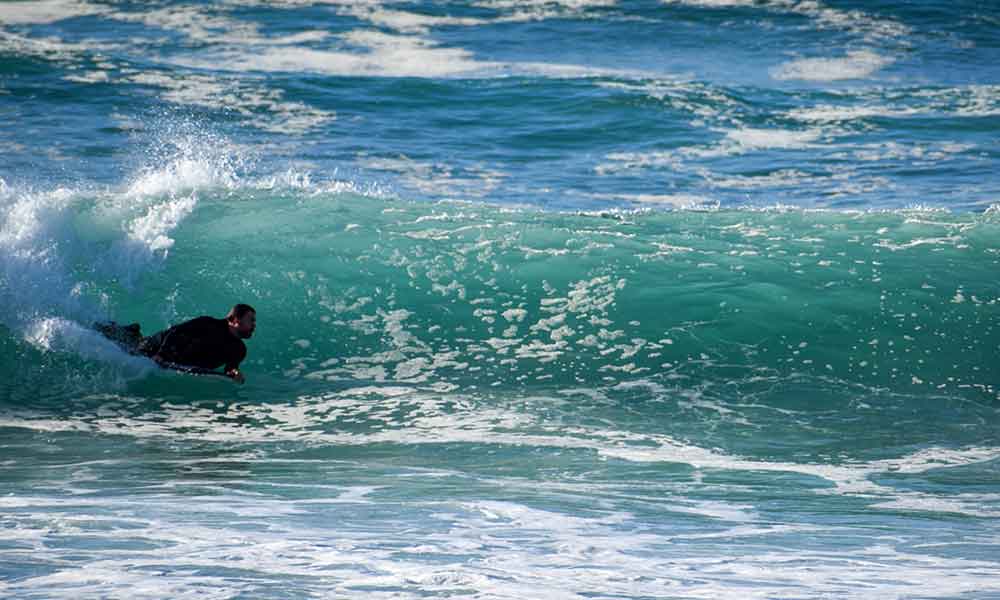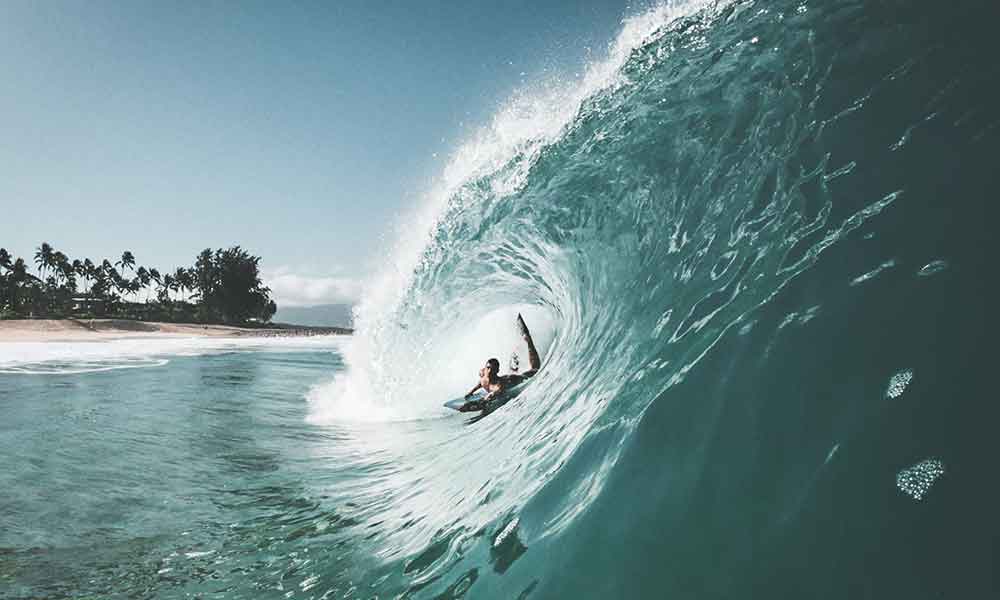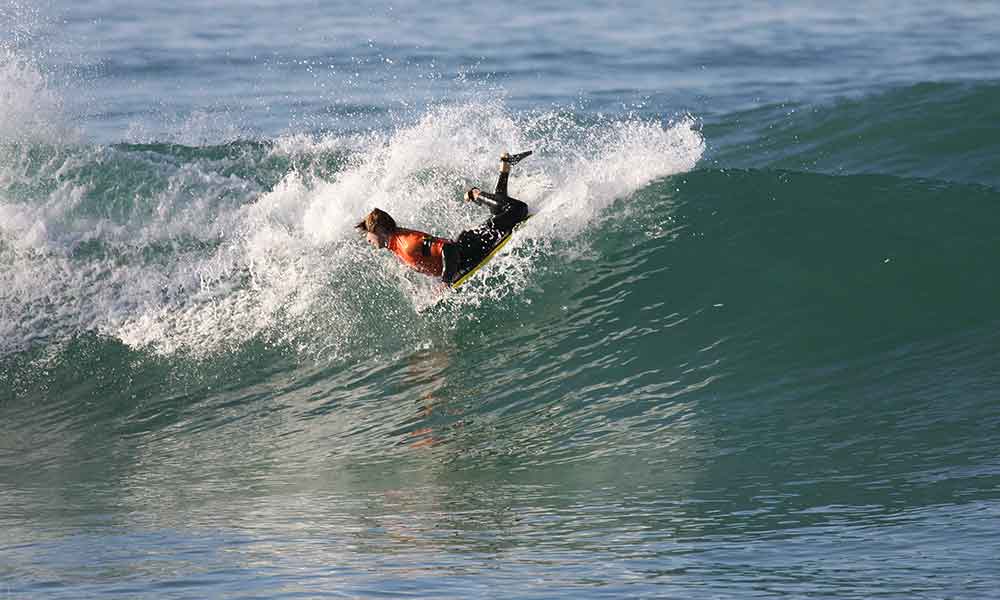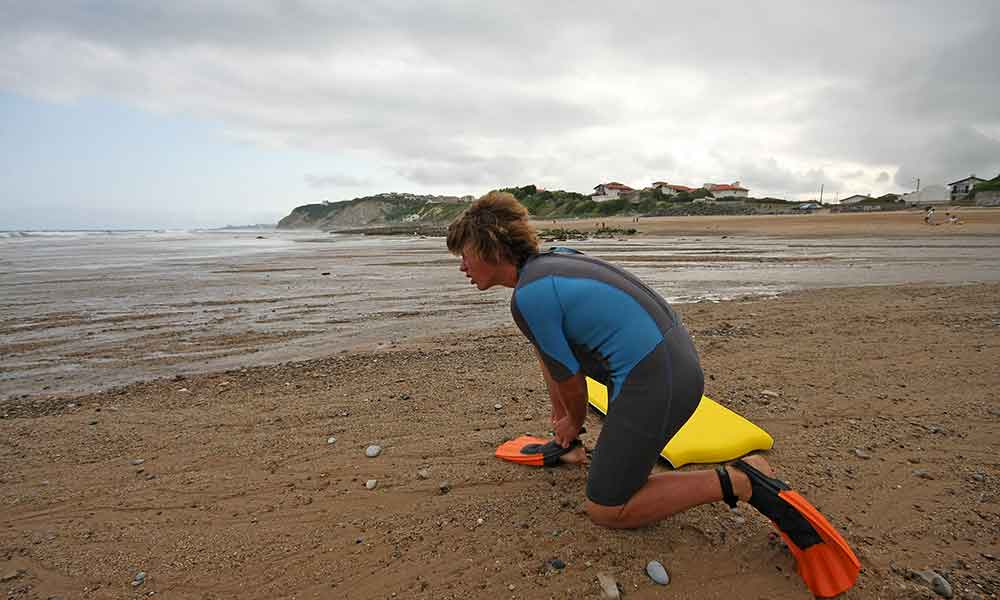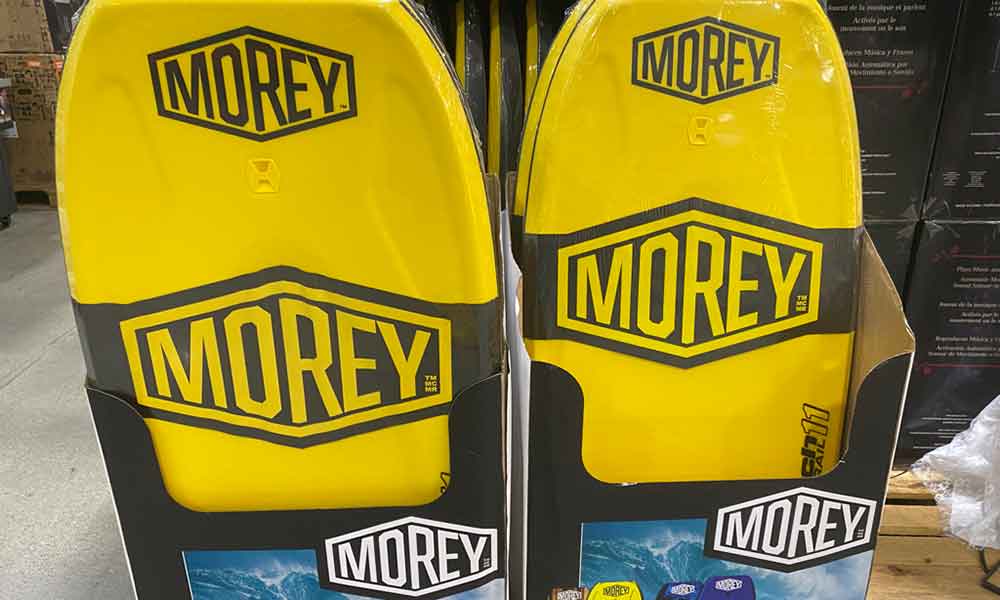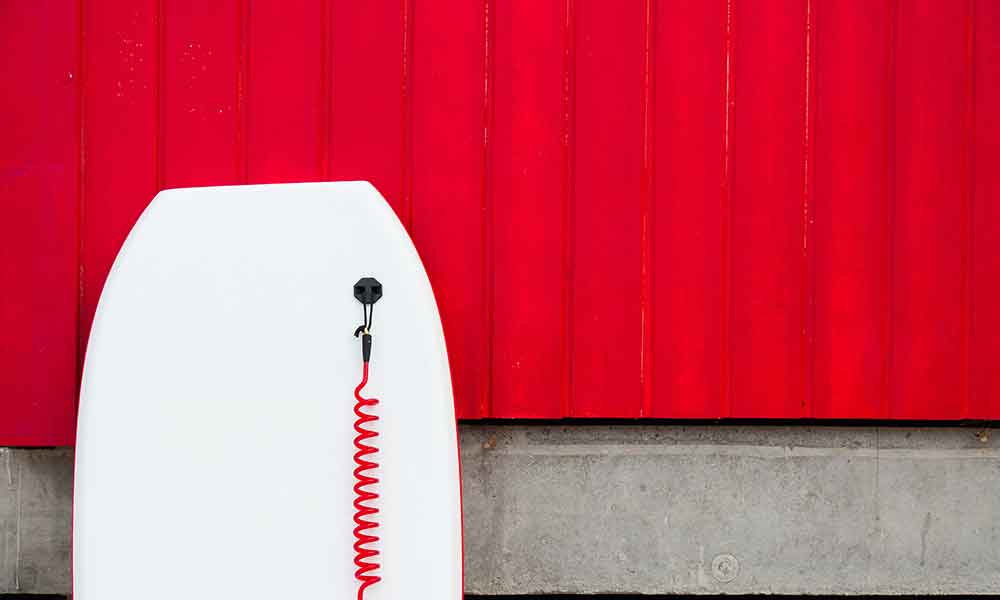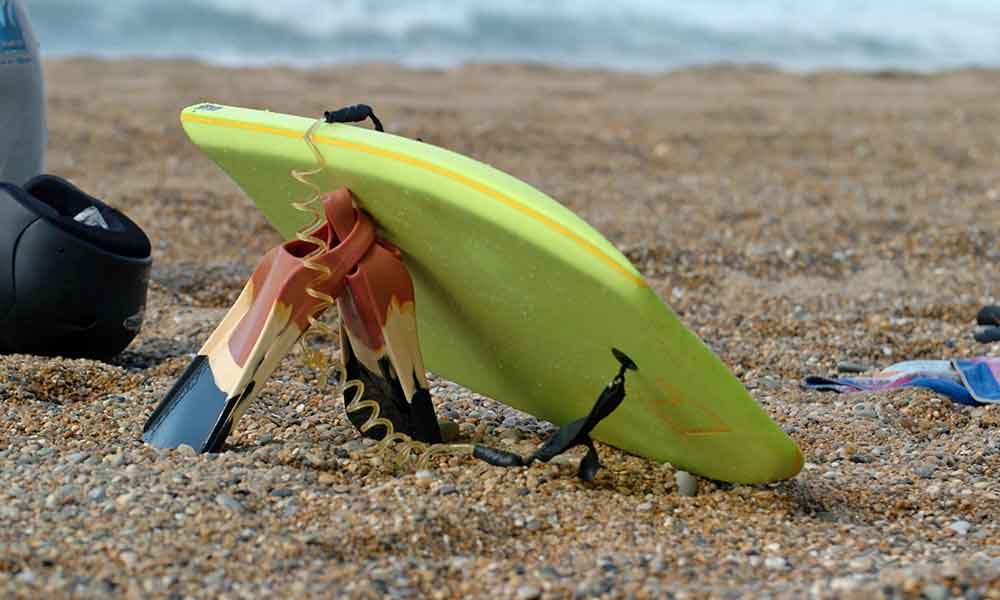Bodyboarding is thought to be one of the earliest forms of surfing, and while modern bodyboarding didn’t become popular until Tom Morey invented the Boogie Board in the 1970s, it may have been present hundreds of years ago in Polynesia.
Bodyboarding is also a little easier than upright surfing, but it’s by no means “easy”, and there are some things you need to learn and some skills you need to master before you grab your board and hit those waves.
What You Need to Bodyboard
Want to know how to bodyboard? Well, you’re going to need some basic supplies before you even think about catching waves.
Buy a Wetsuit and/or Rash Guard
A wetsuit will keep you warm when the temperature drops. If you have little to no experience with watersports, a wetsuit is going to feel very heavy and awkward. But you get used to it and going to the trouble of slipping into that second skin will make a massive difference.
Wetsuits will also protect you from sun damage. Surfers and bodyboarders are much more likely to get skin cancer than the average non-surfer, so you need that extra cover.
Rash guards can help, too. These skin-tight shirts provide sun protection and warmth and they can be worn underneath wetsuits (preventing chafing and providing additional warmth) or in place of them.
What Bodyboard Should You Buy?
Average bodyboard length is between 39″ and 46″. The taller and heavier you are, the longer your chosen board must be.
As you’re a beginner, you should err on the bigger side. Larger boards are better for smaller waves, and that’s all you should be tackling when you’re just getting started.
How to Wear a Bodyboard Leash
There are two types of bodyboard leashes—one that attaches to the wrist and one that attaches to the upper arm.
The leash will keep you tethered to the board and prevent you from losing it when you wipe out.
Whether you choose an upper arm or lower arm leash is entirely up to you, but the former is often recommended for drop-knee riders while the latter is best for prone riders. As a beginner, you should probably opt for the wrist leash.
Don’t Forget the Swim Fins
A bodyboard is much shorter than a surfboard and your legs hang over the backside of the board. To ensure maximum speed and control, you must invest in a pair of swim fins.
You may want to consider investing in some fin socks, as well. They are designed to be worn underneath the fins and will keep your feet warm and comfortable while you ride.
Beginner Bodyboarding Tips
Before you try to catch a wave, take your bodyboard into knee-high water and practice your positioning.
Body Position
After taking your board into knee-high water, place it in front of you and lie down on top of it. Your hips should be near to the tail of the board.
Try to keep your weight centered. One of the biggest mistakes that beginners make is shifting toward their dominant side.
Arm Position
Your front hand should be placed over the corner of the board’s nose. Your back hand should be gripping the rail by your side, roughly in line with your hip.
Your hands must be roughly in the 2 and 10 o’clock positions on the board.
In this position, you’ll be free to lift and push the nose, allowing you to control your speed while preventing you from nosediving.
Practice, Practice, Practice
If you’re a complete watersport novice, you may want to spend some time in that knee-high water just getting used to balancing on the board. Once you’re ready to take the next step, just paddle out and head for those breaking waves.
How Do You Catch A Wave Bodyboarding?
Paddle with both of your arms and kick with your feet. Keep your feet just underneath the surface and focus on steady and rhythmic movements.
Look for waves that are not too big, as you shouldn’t be tackling anything too difficult at this early stage.
Your chosen wave should be heading directly toward the beach.
Once you find your wave, head toward it and turn. The wave should be steep enough to roll you forward but it shouldn’t have broken yet.
Wait until the wave is just 5 feet behind you and then start kicking. Keep one of your hands on the board and paddle with the other.
As the wave approaches, you’ll feel yourself moving faster and can apply a little downward pressure on the nose with your lead hand. Alternatively, if it’s going too faster and you’re a little worried, pull up and you’ll slow down.
Keep kicking as you move down the face of the wave and try to keep yourself centered throughout.
If you need to turn, hold the side of the nose in the direction that you want to turn and then paddle with your other hand. For instance, if you want to turn left, hold the left corner of the nose with your left hand and then paddle with your right.
From here, you just need to ride the wave until it edges toward the shore (usually when the water is knee-deep) and then head out to tackle another one.
FAQs About Bodyboarding
Still need some guidance on how to bodyboard and catch waves like a pro? Check out the following FAQs.
Should You Wax A Bodyboard?
Bodyboarders have their own preferences when it comes to waxing their boards. Some insist on it, others avoid it. The ones who do wax their boards tend to focus on the areas with the most bodily contact, including the rails and abdominal area.
Can You Paddle On A Bodyboard?
You can and should paddle on a bodyboard, but that’s not the only way to generate speed as bodyboarders rely heavily on their feet, as well.
Can You Bodyboard Without Fins?
You can bodyboard without fins, but they provide you with a huge advantage and should be worn if you want to give yourself an edge.
Is Bodyboarding Easier Than Surfing?
Generally, bodyboarding is much easier than surfing and is better for beginners. There is still a lot of skill involved, but you don’t need to stand up so there are fewer balance issues.
Can Anyone Learn to Bodyboard?
As long as you can swim, are comfortable in the water, and don’t have any issues with arm paddling or leg kicking, there’s no reason why you can’t learn to bodyboard.

